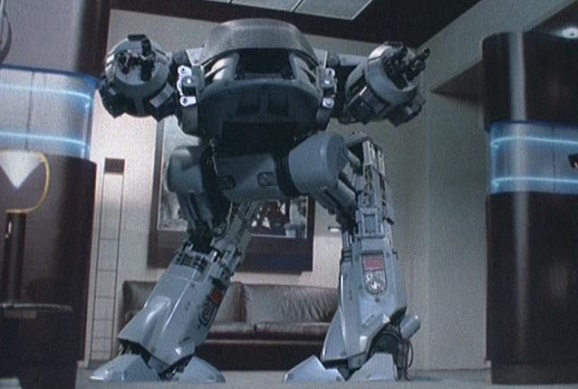Meet RoboThespian, An Actual Robotic Stand-Up Comedian
 Recently, we told you guys about a computer that comes up with its own jokes and gauges audience reaction. I called it a stand-up comic computer, but may have jumped the gun on that moniker. Hot on those metal heels are researchers from Queen Mary’s Cognitive Science Research Group, who have been studying the Engineered Arts-created RoboThespian, an anthropomorphic robot that actually take the stage and performs a comedy act. Not only is he equipped to make audiences groan with pun-filled humor, but he’s also been programmed to read crowds in order to interpret how their reactions and interactions with performer impacts live shows.
Recently, we told you guys about a computer that comes up with its own jokes and gauges audience reaction. I called it a stand-up comic computer, but may have jumped the gun on that moniker. Hot on those metal heels are researchers from Queen Mary’s Cognitive Science Research Group, who have been studying the Engineered Arts-created RoboThespian, an anthropomorphic robot that actually take the stage and performs a comedy act. Not only is he equipped to make audiences groan with pun-filled humor, but he’s also been programmed to read crowds in order to interpret how their reactions and interactions with performer impacts live shows.
“We have studied audiences at festivals, street performance and more recently stand-up comedy,” says Professor Pat Healy of the Cognitive Science Research Group. “Using robots allows us to experiment with how stand-up comedians deliver their jokes and test their effects on audience responses.”
RoboThespian was observed performing two sets at London’s Barbican Centre with comedians Andrew O’Neill and Teirnan Douieb. Programmed by PhD student Kleomenis Katevas, the act was a variation on Douieb’s material, and was subsequently analyzed in comparison with the acts of its human counterparts. The bot comes equipped with visual and audio processing software, which allows it to read the reaction of each audience member at the same time. Theoretically, this means if someone right up front isn’t laughing, RoboThespian can then direct its attention to that person and try and get a laugh. Working a crowd is one of humanity’s oldest tricks, so it’s about time our mechanical brethren followed suit.
“We still have to analyze the performance,” says Katevas. “But it’s clear already that even relatively small changes in the timing of delivery make a big difference to audience response.” Take a gander at RoboThespian in action below.
While these groan worthy jokes are better suited for anti-comics like Neil Hamburger (or children), it’s still a decent act, especially the repeated use of pointing back to the programmer.
“Although a lot of previous work has focused on performers,” Healy said. “We are more interested in audiences, what they contribute to the live experience and ultimately how humans interact with each other in large groups. This research will help us design more compelling live experiences and make technologies such as robots more entertaining and engaging.”
It might make the Hall of Presidents at Walt Disney World a little less dry. It’s only a matter of time before this robo-integration becomes more mainstream, though I doubt comedians will have to worry about losing their gigs to bots.











